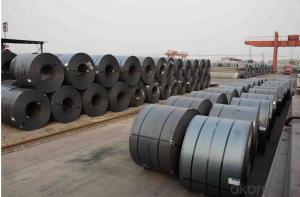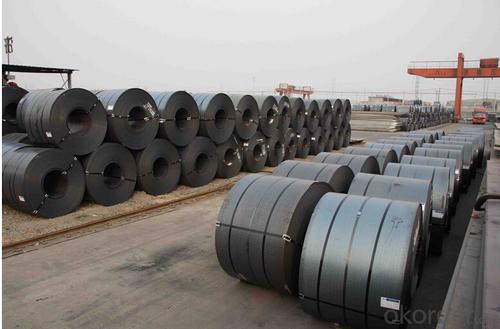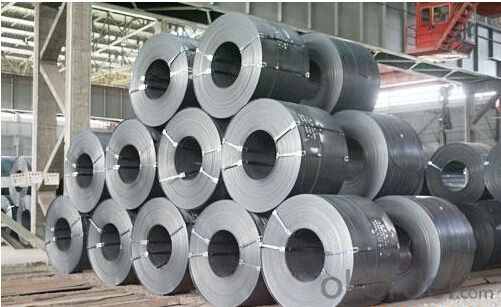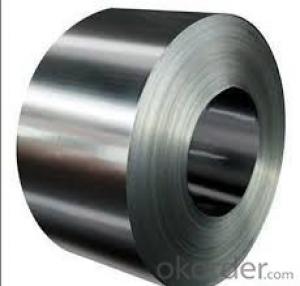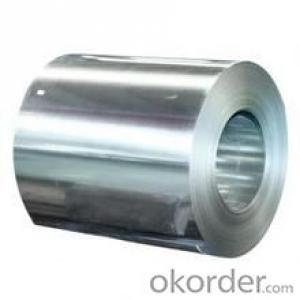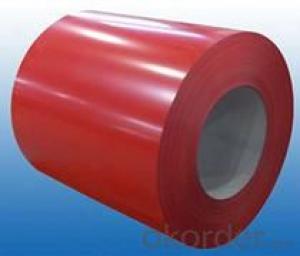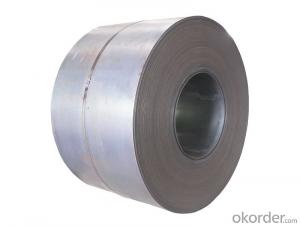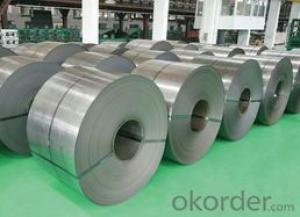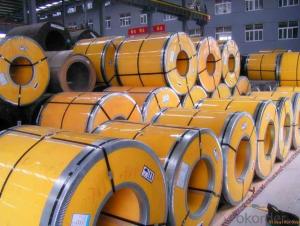HOT ROLLED STEEL COIL
- Loading Port:
- China Main Port
- Payment Terms:
- TT OR LC
- Min Order Qty:
- -
- Supply Capability:
- -
OKorder Service Pledge
OKorder Financial Service
You Might Also Like
Production | hot rolled steel coils |
Port | Tianjin, China |
Category | Minerals & metallurgy |
Thickness | 1.8-16mm |
Width | 1000-1500mm |
Coil Weight | about 23 tons |
Material Grade | SS400\Q235\Q345B |
Technique | hot rolled |
Standard | GB ,JIS |
Test | With Hydraulic Testing, Eddy Current , Infrared Test |
Surface | 1) Bared 2) Black Painted (varnish coating) 3) Galvanized 4) Oiled |
Package | in bundles, strapped by strips. Or as customer’s requirement |
Sample | Common products, we can provide freely, for special production,we can depends on negotiation. |
MOQ | 10 tons |
Payment | 100% L/C at sight, 30% T/T in advance, and the balance against the copy of B/L or negotiation |
Delivery time | Within 10-25 days, according to quantity, asap save customer’s time |
Certificate | ISO |
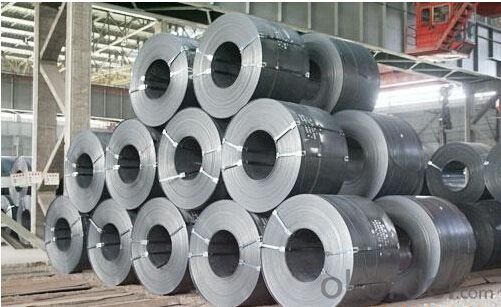

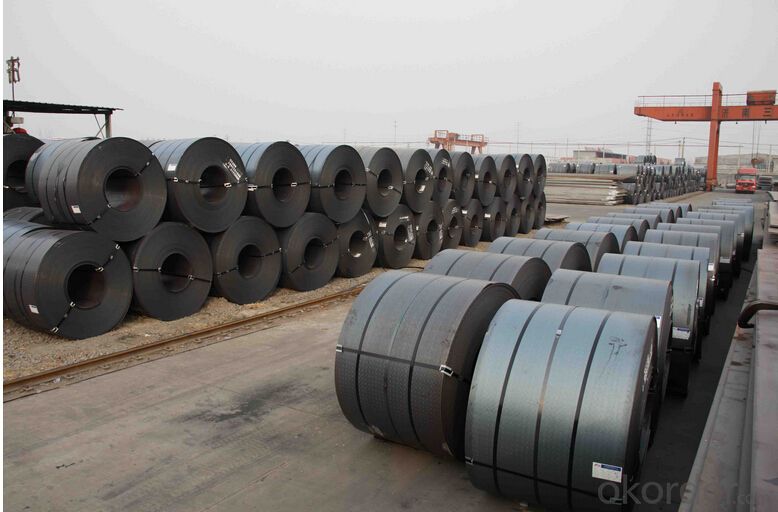
- Q: How are steel coils used in the manufacturing of storage tanks?
- Steel coils are used in the manufacturing of storage tanks as they serve as the primary material for constructing the tank shell. The coils are processed and shaped into cylindrical sections, which are then welded together to form the tank. This ensures strength, durability, and leak-proof construction, making steel coils an essential component in the fabrication process of storage tanks.
- Q: How are steel coils used in the production of kitchen appliances?
- Steel coils are used in the production of kitchen appliances as they are shaped, cut, and formed into various components such as bodies, doors, panels, and frames. These coils provide the necessary strength, durability, and stability required for the construction of kitchen appliances, ensuring the longevity and reliability of the finished products.
- Q: How are steel coils used in the manufacturing of construction formwork?
- Steel coils are used in the manufacturing of construction formwork to provide structural stability and reinforcement. The coils are processed and shaped into various components, such as beams, columns, and panels, which serve as a framework for pouring concrete. The strength and durability of steel make it an ideal material for withstanding the pressure and weight of the concrete, ensuring the stability and longevity of the formwork during construction.
- Q: 2 refridgerator of similar model and same brand..one is stainless steel...the other is clear steel (cheaper)..so wat's the difference between the two?
- Stainless steel is different than regular (clear?) steel because is is an alloy, or combination, of steel and other elements. Stainles steel has 15% chromium, which is very resistant to rust than regular steel. That is why stainless is more expensive
- Q: On a free standing carport with an 8 inch, 22 foot long aluminum i-beam, would a steel 8-inch i-beam be just as strong? I am looking into it since they are cheaper.
- steel is definitely cheaper than aluminum. for the same size, steel is stronger. and much heavier. it may/will require stronger support posts. you'll want to be careful not to set up a galvanic reaction where you have steel and aluminum meet. stainless steel is much more expensive. you just want to make sure your steel beams have a good rustproof coating. either zinc plate or paint.
- Q: What are the common methods of slitting steel coils?
- There exists a variety of methods for slitting steel coils, each possessing their own distinct advantages and applications. 1. Rotary Shear Slitting: This technique utilizes rotary cutting knives to separate the steel coil. The coil is passed through the rotary shear machine, and the knives make simultaneous cuts along the coil's length. Rotary shear slitting is renowned for its high-speed operation and ability to handle thicker gauge materials. 2. Loop Slitting: Loop slitting involves introducing the steel coil into a looping pit, creating a loop of material. The loop is then pulled through a set of knives that make the cuts. This particular approach is commonly employed for thin gauge materials, providing precise cuts with minimal burr. 3. Drag Slitting: In drag slitting, the steel coil is fed through a series of driven rolls or drag pads, which maintain tension on the material. The coil is then guided through circular knives that perform the slits. Drag slitting is suitable for various steel gauges and offers good accuracy and edge quality. 4. Crush Slitting: Crush slitting entails passing the steel coil through a set of rolls, with one roll being rubber-covered and the other being hard. The rubber roll compresses the material against the hard roll, resulting in the slits. This method is commonly utilized for thin gauge or delicate materials, as it minimizes the risk of edge damage. 5. Laser Slitting: Laser slitting employs a high-powered laser beam to make precise cuts on the steel coil. This method is highly accurate and enables complex slitting patterns and narrow width cuts. Laser slitting is frequently utilized for high-end applications that demand superior edge quality. Each of these methods possesses unique advantages and is selected based on factors such as material thickness, desired edge quality, production speed, and cost considerations. It is crucial to meticulously select the appropriate slitting method to ensure the desired outcome and efficiency in steel coil processing.
- Q: How are steel coils used in appliances?
- Steel coils are commonly used in appliances for their strength, durability, and heat conductivity. They are primarily utilized in appliances like refrigerators, air conditioners, and ovens to provide efficient cooling and heating functions. The steel coils act as heat exchangers, transferring thermal energy from one area to another, enabling appliances to control and maintain desired temperatures effectively.
- Q: How do you prevent damage to steel coils during transportation?
- To prevent damage to steel coils during transportation, several measures can be taken. Firstly, proper packaging and securing techniques should be employed, such as using strong and sturdy crates or pallets to protect the coils from physical impact. Additionally, using protective materials like foam or padding between coils can help cushion them and minimize movement. Secondly, ensuring that the coils are properly loaded and secured in the transport vehicle is crucial. This includes using appropriate restraints, such as straps or chains, to prevent the coils from shifting or falling during transit. Lastly, employing safe driving practices, such as avoiding sudden stops or sharp turns, can also contribute to preventing damage to steel coils during transportation.
- Q: Can steel coils be stacked on top of each other?
- Yes, steel coils can be stacked on top of each other.
- Q: gigantic navy ships made of steel float, why??
- They okorder /... Or use the search bar*. (The question has been answered a thousand and one times). If you do then you will read many answers that push the popular myth that they displace more water than they weigh (as if some unseen 'finger of god' is supplying a mystery force in addition to the vessel's weight). Such 'explanations' cannot be supported by either calculation or experiment and are wishy-washy drively nonsense. So beware of Archimedes' Trolls on this one!
Send your message to us
HOT ROLLED STEEL COIL
- Loading Port:
- China Main Port
- Payment Terms:
- TT OR LC
- Min Order Qty:
- -
- Supply Capability:
- -
OKorder Service Pledge
OKorder Financial Service
Similar products
Hot products
Hot Searches
Related keywords
